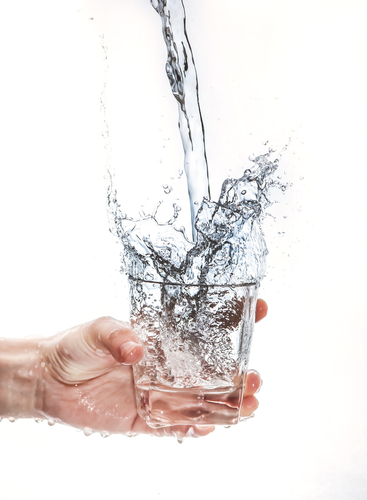
We may not think about the importance of water testing because we take clean tap water for granted. For most people in this country, filtered water is provided through city water lines into our taps. Source water comes from lakes, rivers, and groundwater (aquifers) fed by rain and melting snow, and then cleaned by a municipal wastewater plant to remove bacteria, algae, viruses, fungi, and harmful minerals.
But there are things that affect our water and make it less safe than we think. These include:
- Well water
- Lead pipes
- Backflow
Importance of testing well water
Millions of U.S. households get their drinking water from a well. It’s common in more rural areas where water comes from a private well system and doesn’t pass through any federally-regulated treatment processes.
While well water may appear to be clear and odorless, it could still contain microbes, fungi, and bacteria that are harmful to your health, causing gastrointestinal illness, neurological disorders, and reproductive problems. There may also be arsenic or radon contamination in certain areas.
As a result, the National Ground Water Association (NGWA) recommends testing well water once every year at the very least, and more often if you notice any change in your well water’s appearance, taste or smell.
The danger of lead in your water
Any level of lead in drinking or cooking water is extremely toxic, even at a very low exposure level. Lead does not break down, and when ingested, can cause serious health concerns such as heart problems, hypertension, kidney problems, and fertility issues. Children are especially vulnerable to its effects, and the Centers for Disease Control (CDC) says it has been show to affect IQ, ability to pay attention, and academic achievement.
Prior to the 1920s most cities and homes used lead pipes for plumbing, and national plumbing codes approved lead pipes into the 1980s. Lead as plumbing solder wasn’t banned until 1986.
People living in older houses are likely to have lead pipes unless the plumbing system has been entirely replaced. But other potential sources of lead in home plumbing can come from:
- The service line connecting the water main to your house
- The solder in your plumbing pipes
- The older brass faucets and valves (until 2014 brass used for faucets and valves could have up to 8 percent lead in it)
- You cannot see, taste, or smell lead in water, so testing your home’s drinking water is the only way to find out whether or not it’s there.
How backflow affects water quality
Backflow is an unwanted flow of water in the reverse direction. Municipal water lines use pressure to send clean water into our homes and businesses. Sometimes that pressure becomes too low, or is overcome by a stronger pressure, and there’s a ‘cross-connection’ between safe water and contaminated water, or backflow.
Cross-connections with the potential for backflow include:
- Dishwashers
- Garbage disposals
- Toilets
- Hand-held shower heads
- Whirlpool devices
- Faucets (including any faucet where a hose can be attached)
- Swimming pools
- Fish ponds
- Fountains
- Lawn irrigation systems
Many homes are equipped with a backflow prevention assembly, and since 1990 building codes in Florida have required BFPA with the installation of any residential irrigation system.
Testing by a trained and certified backflow specialist is a requirement with the installation of any BFPA to make sure the assembly functions properly. And because this equipment is mechanical with moving parts that wear out or get polluted, it’s important to have it inspected every year to ensure your water supply is safe from backflow contamination.
To make sure your water is clean for you and your family, contact Michael’s Plumbing to have backflow testing done on your system. Our techs can install, repair and replace your system, insuring it’s safe for you and your family. Schedule your next service call online today!

